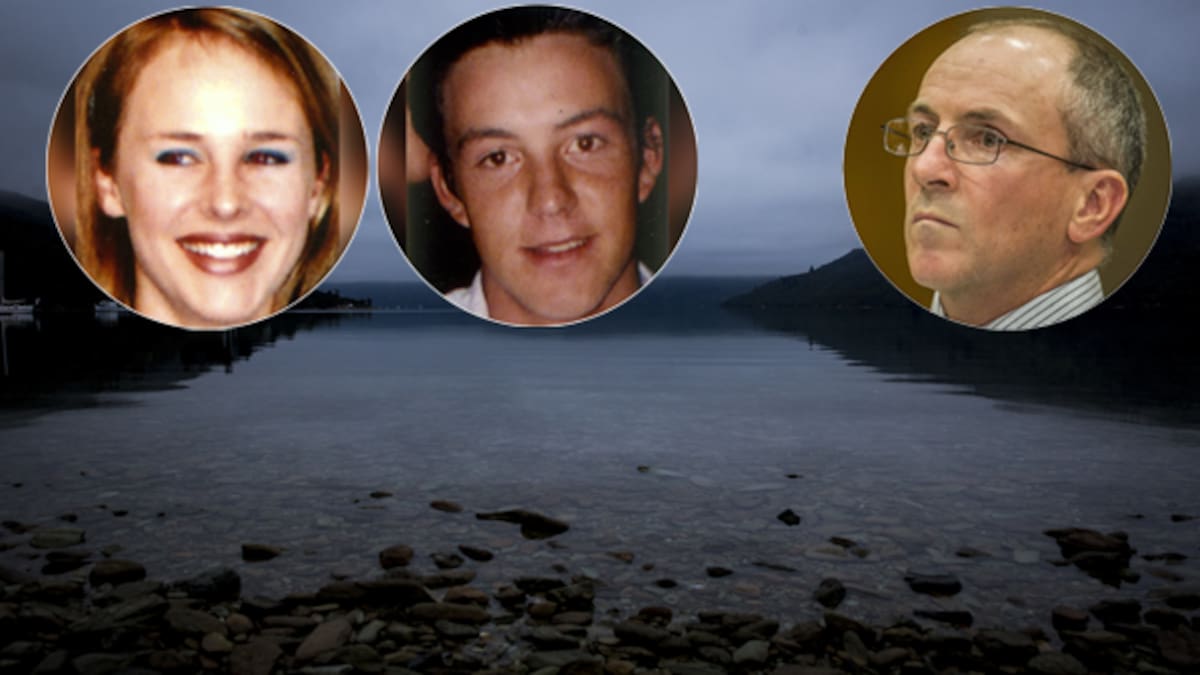A controversial piece of evidence that was central to the conviction of double murderer Scott Watson will be tested in the Court of Appeal tomorrow.
Forensic scientist Sean Doyle will give evidence casting doubt on whether hairs found on a blanket on Watson’s boat Blade belonged to Olivia Hope.
Watson’s case is back before the Court of Appeal in Wellington this week, where he’s seeking to overturn his convictions for the murders in the Marlborough Sounds on New Year’s Day in 1998.
Ben Smart, 21, and Hope, 17, haven’t been seen since getting out of a water taxi on to a yacht moored in Endeavour Inlet. There’s been no trace of the pair since the early hours of New Year’s Day, 1998. Their bodies and possessions have never been found.
Watson was convicted of double murder in September 1999 and sentenced to life imprisonment, with a minimum period of 17 years in jail. He has now spent 26 years behind bars, protesting his innocence.
The blanket was first examined in 1998 and no hairs were found. In March of that year, after samples of Hope’s hairs were sent to the ESR laboratory, the blanket strands were tested again. This time two strands of blond hair were found.
The latest appeal is the result of a royal prerogative of mercy, applied for in 2017 and granted in 2020. The grounds for the appeal are two-fold:
- The reliability of DNA evidence, specifically hairs that were thought to belong to Hope and were recovered from Watson’s boat, Blade.
- Mistakes by the police in using a photo montage as a means of identifying Watson. The montage contained a new photo that showed Watson caught halfway through a blink. This gave the appearance of hooded eyes, a characteristic of the mystery man’s description.
Today the court heard from the writers of a report commissioned by Watson’s team which assessed the identification of Watson by a water taxi driver, Guy Wallace, who died in 2021. The report concluded Wallace’s identification testimony had little or no probative value.
But Crown lawyer Stuart Baker raised questions about the report, saying it was selective in its evidence and made findings of fact without all the notes of evidence, including the 3000 pages of trial transcript.
Baker started today’s proceedings by cross-examining Dr Gary L. Wells, an American psychologist and expert in witness memory research. Wells and his colleague Dr Adele Quigley-McBride prepared the report.
Wells appeared at the hearing by video link, with much of his evidence centring on the reliability of witness accounts from that night.
Baker suggested to Wells that he had made factual findings without sufficient notes of evidence.
Wells told the court he had read all the evidence provided to him, focusing on the statements and identification of the witnesses who were on the water taxi that night with Smart and Hope when they dropped them at the boat with the man.
Much of the time was spent on Wallace’s evidence. He originally gave the police a composite of the man on the water taxi that night.
The composite picture showed a man with long, straggly hair.
That differed from the photograph of Watson which Wallace was shown in January, which was black and white and taken in 1990 – eight years before the murders. Wallace rejected the photo, telling the police, “No bloody way that it was this guy”, Wells said.
Then in April, three months later, he was shown a montage and after “wavering” between two photos, he picked Watson from the montage.
“We think that montage was biased … Wallace had seen the image multiple times, he was shown the image by the media,” Wells said.
The doctor said he thought Wallace’s memory of the man was best captured by the composite picture he gave the police and it changed over time. “But memory doesn’t get better with time, so we believe memory contamination is the best explanation.
“He confidently rejected a single photo of Watson while his memory was fresh,” he said.
“All he was doing when making that identification that he didn’t actually recognise him from that night. That he’s trusting that law enforcement and investigators are leading him down the right path and then he began questioning that but then he ends up coming around at the time of the trial.”
Baker put it to Wells that the doctor had been selective about the evidence, including that of water taxi passenger Hayden Morrissey, who didn’t pick Watson from a montage he was shown.
Wells said Morrissey had described the man in the water taxi with him as having long, scraggly hair. He also suggested he was a more reliable witness because, unlike Wallace, he hadn’t been shown a photograph of Watson.
But Baker suggested a reason Morrissey didn’t pick Watson out from the montage was that he saw the man only from behind and therefore was unable to pick him from a photo. Yet Wells had failed to include this in his report.
Hope’s sister Amelia’s description of Watson was also challenged by Wells, who said she didn’t mention Watson’s short hair and receding hairline until after Watson’s image was plastered all over the media.
“Once you see the person plastered across TV or are shown a picture by law enforcement if you are adding to your description, it’s post-event information – not coming from memory of the critical event but from other sources,” he said.
But Wells did agree people can describe the same person in different ways.
He concluded his evidence by saying he wasn’t advocating for Watson.

“We don’t say that we believe Watson to be innocent, we’re just saying that eyewitness evidence does not have positive propensity value on that point,” he said.
This afternoon Quigley-McBride defended the use of Morrissey’s evidence, saying it was a different process to identify someone from a line-up than to describe them to someone.
She denied the report was misleading because it omitted that Morrissey had only seen the man from behind. And she said both Wallace and Morrissey had given similar descriptions of the man on the boat that night, which differed from photos of Watson.
Baker suggested the report’s findings about Wallace’s identification of Watson was merely speculation.
“Only if you think science is speculation,” she responded.
Watson is not attending the Court of Appeal hearing but is represented by his lawyers, Nick Chisnall, KC, and Kerry Cook.
The Crown is represented by Madeleine Laracy and Baker.
Watson’s case before Justices Christine French, Patricia Courtney and Susan Thomas is set down for a week.
Catherine Hutton is an Open Justice reporter, based in Wellington. She has worked as a journalist for 20 years, including at the Waikato Times and RNZ. Most recently she was a media adviser at the Ministry of Justice.





